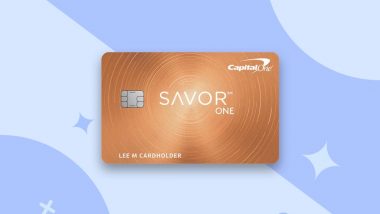Understanding your credit card statement can be a bit of a balancing act.
This is because there is more than one balance on the statement. This may include the so-called outstanding balance.
So, what is an outstanding balance and how is it different from other balances that appear on your credit card statement? Keep reading to learn more about credit card balances.
What is an outstanding balance on a credit card?
The outstanding balance, also known as the current balance, refers to the total outstanding amount on your credit card. This includes purchases, balance transfers, cash advances, interest payments and fees. The outstanding balance serves as a real-time snapshot of your credit card bill.
The outstanding balance changes every time you use your card, even from one minute to the next. For example, if you charge $75 for a dinner, that purchase will become part of your outstanding balance once the transaction is posted to your account.
The outstanding balance helps determine how much credit you currently have. To obtain available credit, subtract your outstanding balance from your credit limit and add any outstanding payments that are not yet showing in your account.
Let’s say your outstanding balance is $1,500 and your credit limit is $5,000, and a $200 pending transaction has not yet appeared in your account. At this point, your available credit is $3,300 ($5,000 subtracted from $1,500 and $200 = $3,300).
Where can I find my outstanding account balance? Simply log into your account online or through the mobile app, or contact your card company (such as American Express, Capital One, Chase, or Citibank).
How is the outstanding balance different from the current balance?
Although the names are different, outstanding balance and current balance mean the same thing.
How is the outstanding balance different from the statement balance?
The statement balance refers to the amount of money you owe based on the last statement or bill you received. It can also be displayed as monthly balance or new balance. This dollar amount may or may not match the outstanding balance.
The statement balance reflects all purchases, accrued interest, fees and other items accrued during the last monthly billing cycle.
A billing cycle is a defined period of time between billing reports. Thus, one billing cycle can last from May 9 (opening date) to June 8 (closing date). The billing cycle does not necessarily start from the first to the last day of each month.
Keep in mind that the balance of the statement remains the same until the next monthly statement is sent by the credit card issuer. However, the balance of the statement and the outstanding balance may or may not be the same. It depends on whether there has been any activity on your card since the statement balance was calculated.
How much of your outstanding balance do you have to pay?
You look at your credit card bill and wonder how much of your outstanding balance you have to pay. The decision depends on your current financial situation.
Your statement balance often exceeds the minimum payable amount shown on your monthly statement. Let’s say your statement balance is $2,000, but the minimum payment due is $50. At the very least, you must make a minimum payment of $50 by the due date.
But if you want to avoid paying interest, you must pay the entire balance of the $2,000 statement. Paying the full balance on a statement is a smart way to avoid accruing interest.
You don’t have to pay the outstanding balance to avoid interest and fees. Paying the balance of the statement will take care of that.
However, if you pay off the entire outstanding balance, you can lower your credit utilization rate, which is 30 percent of your credit score. This ratio refers to the amount of money you owe on all your credit cards divided by the total amount of credit card limits on your cards. Some experts recommend keeping your credit utilization rate below 30 percent. But others offer smaller amounts, such as 25 percent or even 10 percent. Use our loan usage calculator to see where you are.
How does your credit card balance affect your credit score?
Making regular, timely credit card payments can improve your credit score. But even if you make timely payments, a large credit card balance can hurt your credit score.
Your credit card balance can affect your credit score depending on your credit utilization ratio – the total amount you owe on your cards compared to your total credit limit.
A high credit utilization ratio can lower your credit score. If a credit card issuer sees that you have large balances on your credit cards compared to your credit limits, they may view you as a risky customer.
Having a large balance may indicate that you are in financial difficulty and are therefore paying your bills late or not paying at all.
Your payment history makes up 35 percent of your credit score. Late payments or missed payments can damage this story and lower your credit score.
bottom line
High credit card balances can negatively affect your credit utilization rate and payment history. This, in turn, can make it harder for you to get a loan or, if you can get a new loan, it can lead to higher interest rates. With this in mind, it is always recommended that you pay your balance in full at the end of each billing cycle to avoid such consequences.
Editorial disclaimer
The editorial content on this page is based solely on the objective judgment of our contributors and is not based on advertising. It was not provided or ordered by credit card issuers. However, we may receive compensation when you click on links to our partners’ products.


